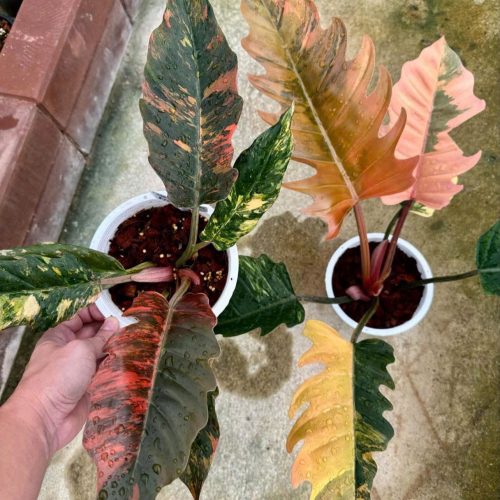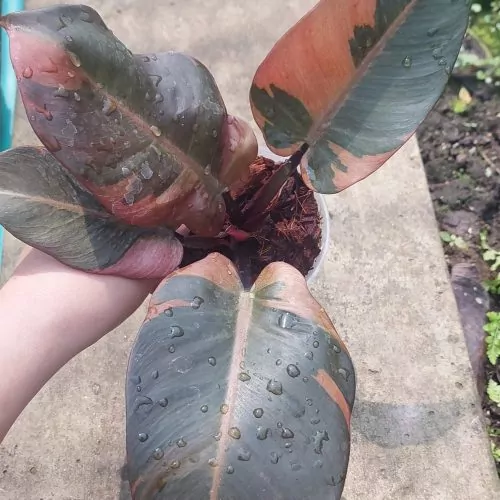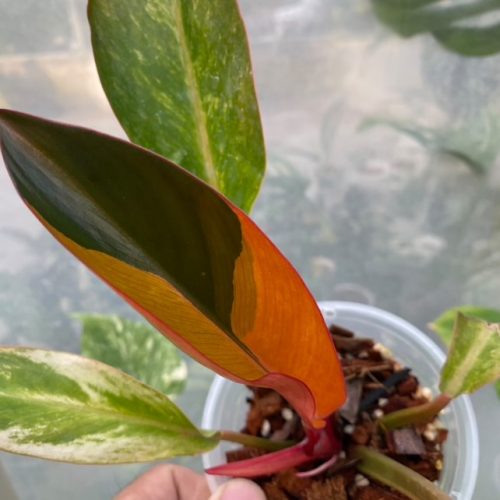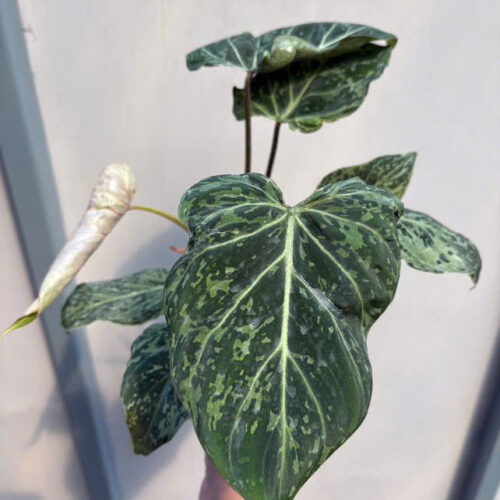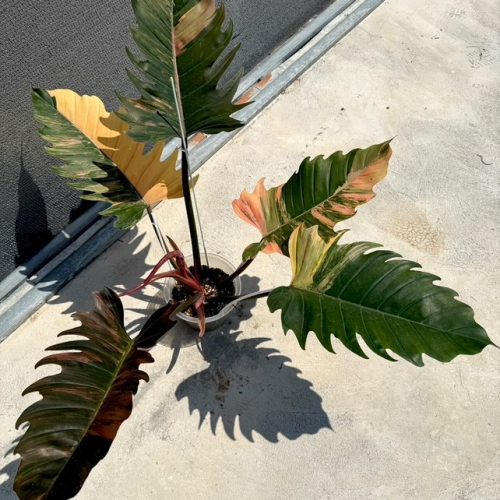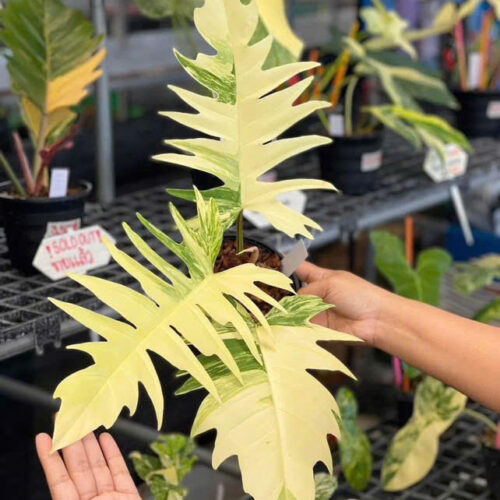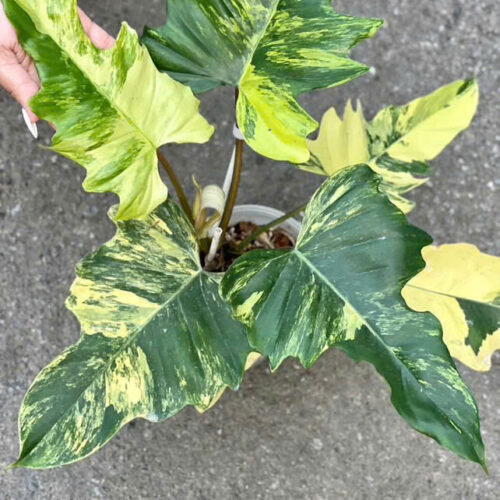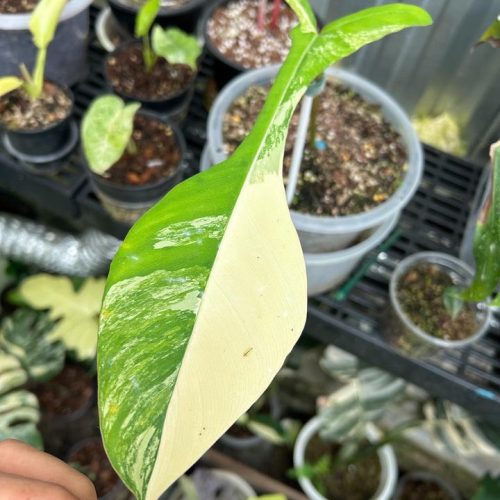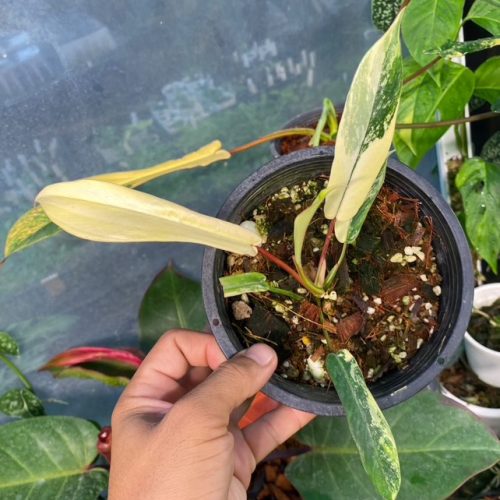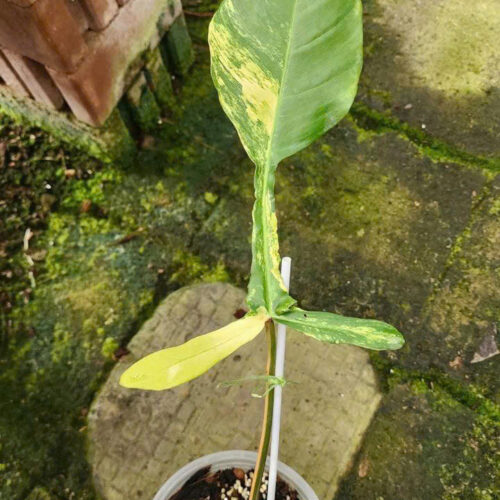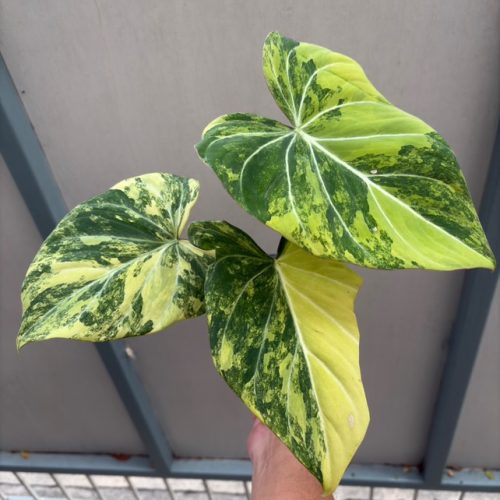Introduction
Philodendron Holtonianum is an attractive and highly sought-after tropical plant species in the Philodendron family. With its unique foliage and relatively easy care requirements, this plant is a must-have for both experienced and novice plant enthusiasts. In this article, we’ll discuss the origin, appearance, and care of Philodendron Holtonianum, along with tips on propagation and dealing with common issues.
Origin and Distribution
Philodendron Holtonianum is native to the tropical rainforests of Central and South America. The species is particularly prevalent in countries such as Colombia, Ecuador, and Brazil, where it grows naturally in the understory of the forest.
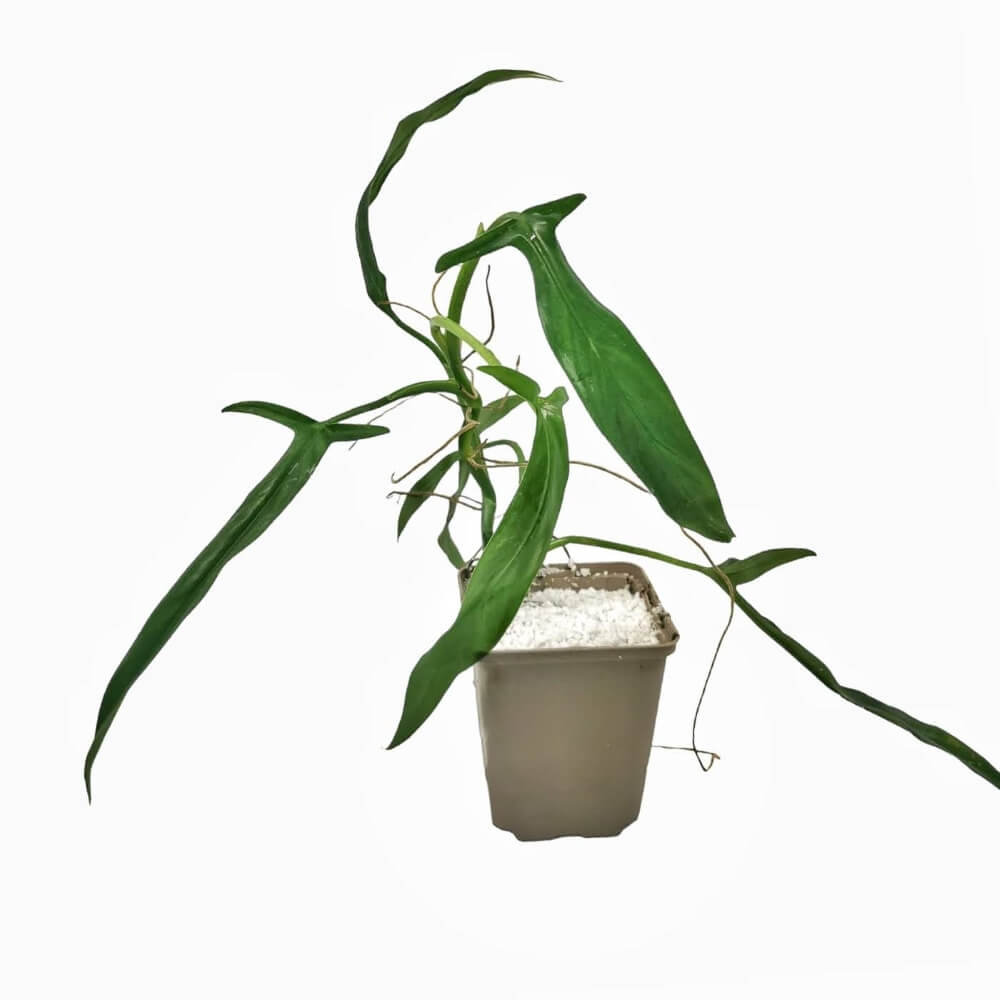
Appearance and Growth
-
Leaves
The leaves of Philodendron Holtonianum are its most striking feature. They have an elongated, lanceolate shape, and are typically deep green with a glossy surface. The leaves can grow up to 10 inches long and 3 inches wide, with a prominent midrib running through the center. Mature leaves may exhibit a distinctive red hue on their undersides, adding to the plant’s visual appeal.
-
Stem
The stem of Philodendron Holtonianum is relatively thick, with aerial roots that help the plant attach itself to trees or other support structures in its natural habitat. In a home setting, the plant can be trained to climb a moss pole or trellis, giving it a striking vertical appearance.
-
Roots
Philodendron Holtonianum has a robust root system, which allows it to absorb water and nutrients efficiently. The roots also help anchor the plant in the soil, providing stability as it grows.
Care and Maintenance
-
Light Requirements
Philodendron Holtonianum thrives in bright, indirect light. Direct sunlight can cause the leaves to burn, so it’s best to place the plant near a north or east-facing window. If you don’t have access to natural light, artificial light sources like fluorescent or LED grow lights can also be used.
-
Watering Needs
This plant prefers evenly moist soil, so it’s essential to water it regularly. Be careful not to overwater, as this can lead to root rot.
-
Temperature and Humidity
Philodendron Holtonianum is a tropical plant and prefers a warm and humid environment. The ideal temperature range for this plant is between 65-80°F (18-27°C). Ensure that the temperature does not drop below 55°F (13°C), as this can cause the plant to suffer.
Maintaining high humidity levels is also crucial for the plant’s health. Aim for a humidity level of around 60% or higher. You can achieve this by using a humidifier, placing a tray of water near the plant, or misting the leaves with water regularly.
-
Soil Mix
A well-draining soil mix is essential for Philodendron Holtonianum. You can create a suitable mix by combining equal parts of potting soil, peat moss, and perlite. This combination will allow the roots to breathe while retaining enough moisture for the plant.
-
Fertilization
Fertilize your Philodendron Holtonianum every 4-6 weeks during the growing season (spring and summer) with a balanced liquid fertilizer diluted to half strength. Reduce the frequency of fertilization during fall and winter, as the plant’s growth slows down during these months.
-
Pruning
Regular pruning is essential to maintain the size and shape of your Philodendron Holtonianum. Prune any leggy or yellowing growth to encourage bushier growth and a more attractive appearance. Always use clean, sharp scissors or pruning shears to avoid damaging the plant.
Where to buy Philodendron Holtonianum? Benefits from importing plants from Thailand
- Shipping: Door to door shipping, fast and safe with Dragon Courier
- Biodiversity: Thailand is known for its rich biodiversity, including a wide variety of aroid species. This diversity allows importers to access a broad range of unique and exotic aroid plants.
- Quality and Health of Plants: The suitable climate helps the plants grown here stay healthy and of high quality.
- Cost-Effectiveness: Due to favorable growing conditions and efficient production methods, Thai aroid plants can often be more cost-effective compared to those from other countries.
- Access to Hybrid Varieties: Thai growers are often involved in the development of new hybrid aroid varieties, offering unique plants that may not be available from other sources.
Philodendron species are the most sought after by aroid plant lovers
Common Issues
-
Pest Problems
Like many other houseplants, Philodendron Holtonianum can be susceptible to pests such as spider mites, mealybugs, and aphids. Inspect your plant regularly for any signs of infestation. If you detect pests, treat the plant with insecticidal soap or neem oil to eliminate the problem.
-
Diseases
Overwatering can lead to root rot and fungal diseases in Philodendron Holtonianum. Ensure that you’re providing the plant with well-draining soil and avoid overwatering to prevent these issues.
-
Yellow Leaves
Yellow leaves can be a sign of overwatering, underwatering, or nutrient deficiencies. Adjust your watering schedule and fertilization regimen accordingly to address this issue.
Propagation
-
Cuttings
Philodendron Holtonianum can be propagated through stem cuttings. Take a healthy cutting with at least two leaves and a node, then place it in water or moist soil. Roots should begin to develop within a few weeks.
-
Air Layering
Air layering is another propagation method suitable for Philodendron Holtonianum. Make a small cut in the stem, cover it with moist sphagnum moss, and secure it with plastic wrap. Once roots have developed, remove the new plant from the parent plant and pot it separately.
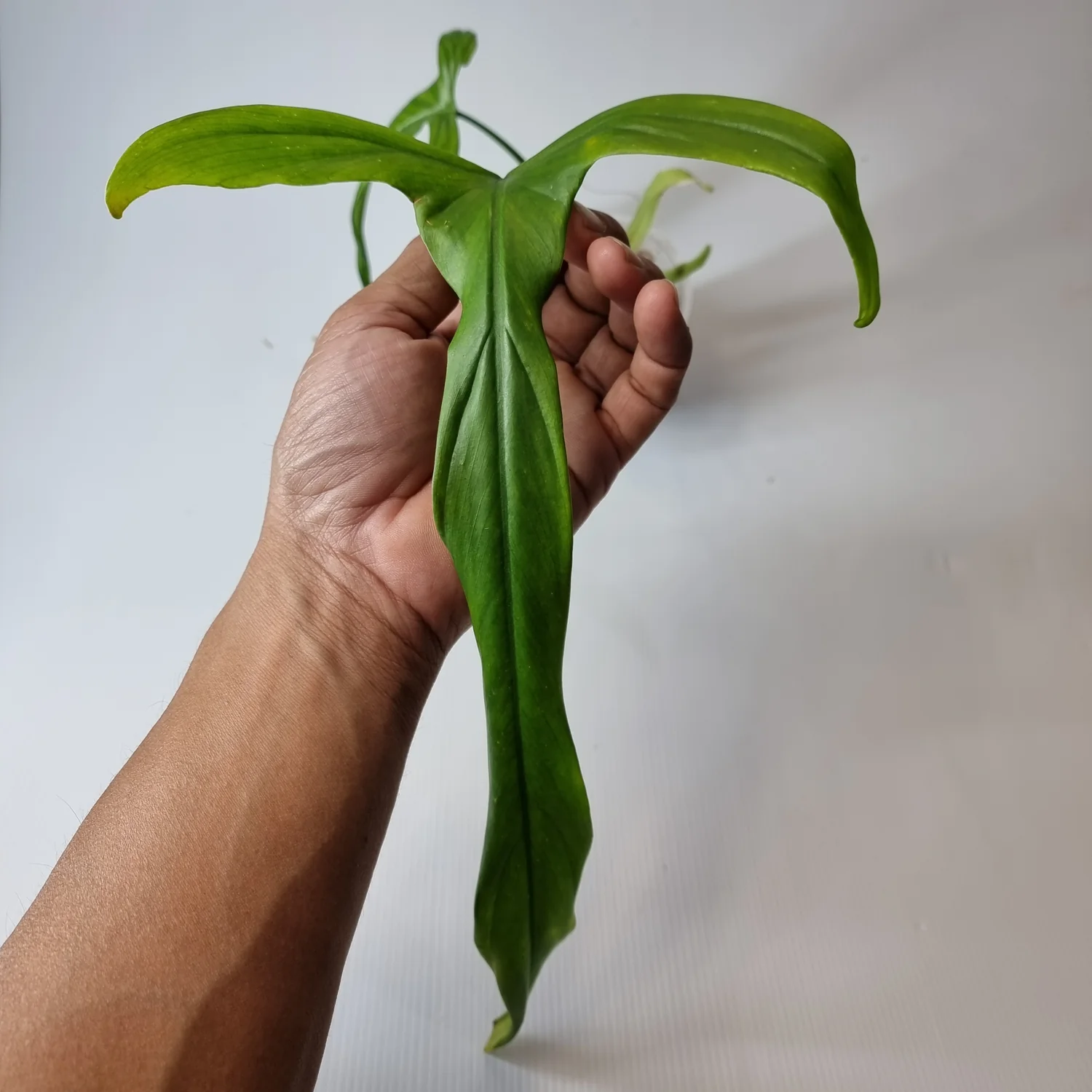
“Discover the unique beauty of Philodendron Holtonianum! Click the link to bring this exotic plant into your home today and elevate your space with its lush, tropical charm.”
Conclusion
Philodendron Holtonianum is a stunning addition to any indoor plant collection. With its unique foliage and relatively easy care requirements, this tropical beauty can thrive in a variety of home environments. By following the tips provided in this article, you can ensure your Philodendron Holtonianum stays healthy and beautiful for years to come.
FAQs
- How often should I water my Philodendron Holtonianum? Water your plant when the top 1-2 inches of soil feels dry to the touch. Be careful not to overwater, as this can lead to root rot.
- Can Philodendron Holtonianum tolerate low light conditions? While Philodendron Holtonianum can survive in low light conditions, it will not thrive. The plant prefers bright, indirect light for optimal growth and health.
- Why are the leaves on my Philodendron Holtonianum turning yellow? Yellow leaves can be a sign of overwatering, underwatering, or nutrient deficiencies. Adjust your watering schedule and fertilization regimen accordingly to address this issue.
- How can I increase the humidity around my Philodendron Holtonianum? To increase humidity, you can use a humidifier, place a tray of water near the plant, or mist the leaves with water regularly.
- Is Philodendron Holtonianum toxic to pets? Yes, Philodendron Holtonianum contains calcium oxalate crystals, which can be toxic to pets if ingested. Keep the plant out of reach of cats, dogs, and other animals to avoid accidental ingestion.




